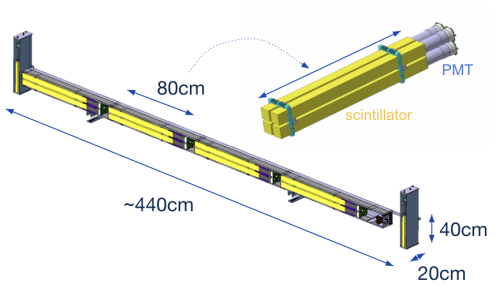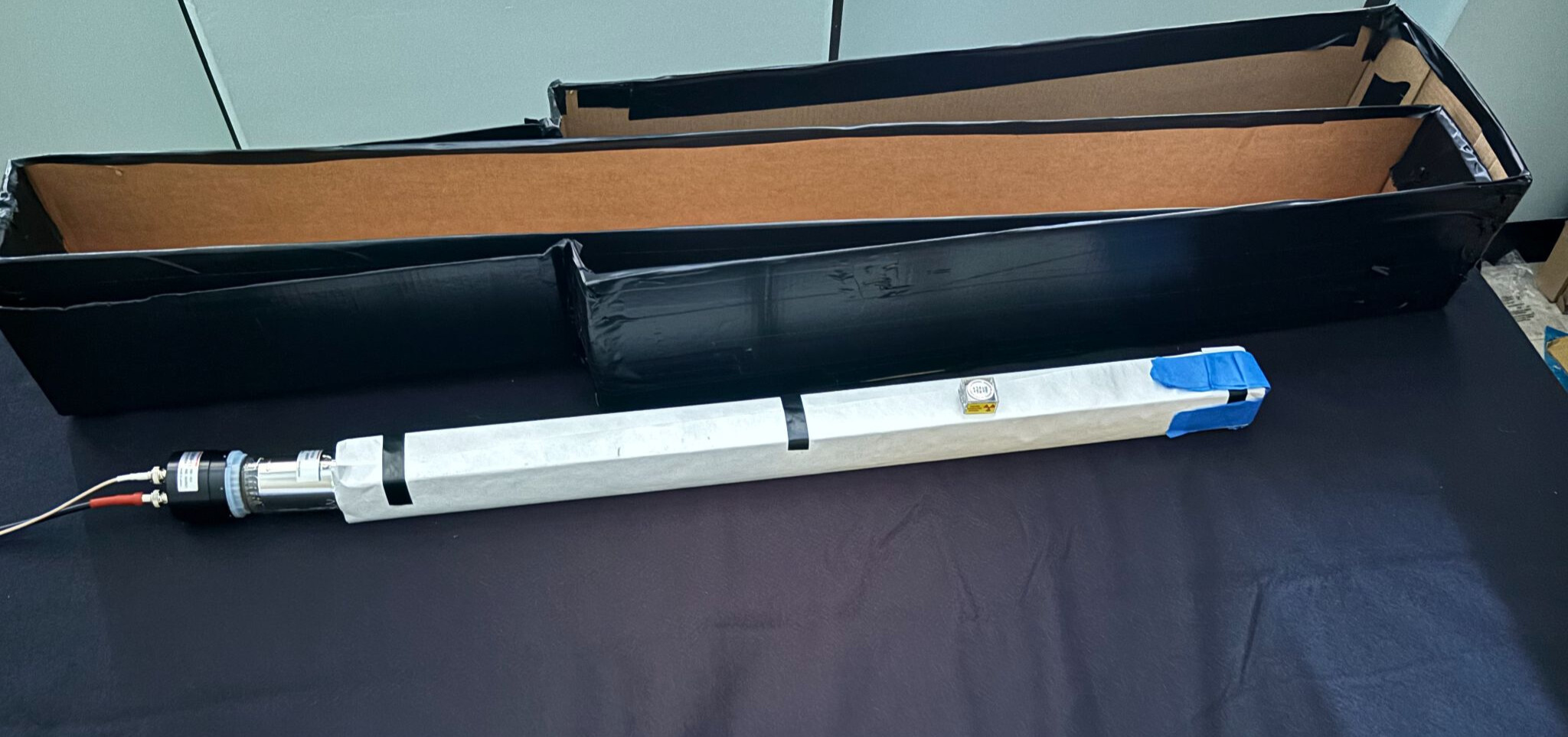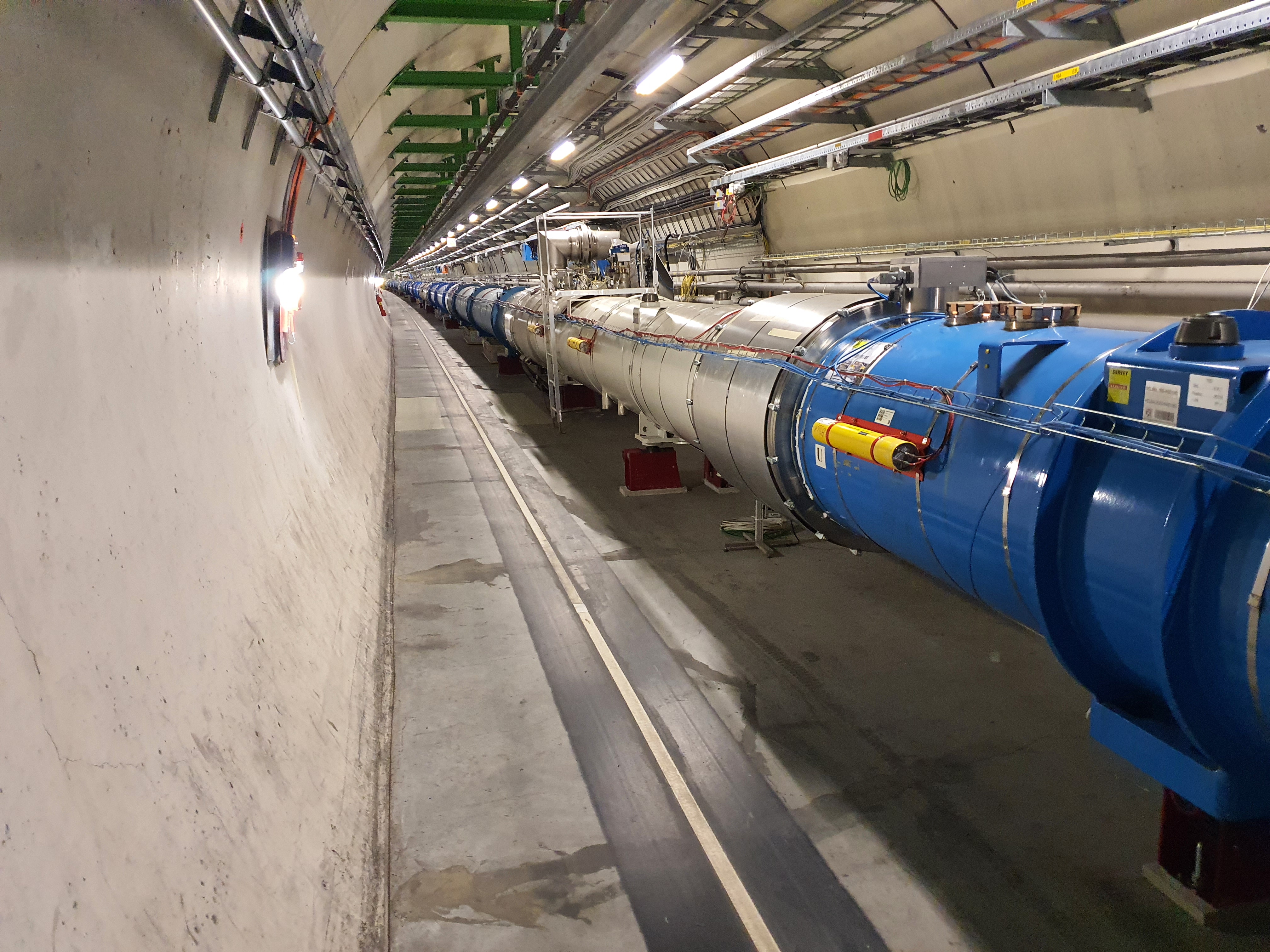
Prototype Dark Matter Detector at CERN Fabricated and Installed by UC Davis Students
Something strange and seemingly impossible is happening across the universe. Our galaxies rotate at such spectacular speeds that they should rip themselves apart. But they don’t.
To explain this, scientists hypothesized the existence of dark matter, an invisible substance only detectable via its gravitational effects. Various observations suggest dark matter accounts for about 27% of the universe, but what dark matter is composed of is a complete unknown.
“We have no evidence of what it actually is,” said Assistant Professor Matthew Citron, Department of Physics and Astronomy. “But as we theorize more and more, we’re learning that dark matter may not just be one particle but a whole sector that contains lots of different particles and they interact in different ways.”
According to physicists, this “dark sector” could be just as richly complex as the particles in the visible universe.
Citron and his lab are on the hunt for dark matter. Specifically, they’re interested in millicharged particles, proposed subatomic particles that have a tiny fraction of an electron’s charge (somewhere between 0.1% and 10%). To collect evidence of their existence, Citron and colleagues designed FORMOSA, a particle detector meant to be sensitive enough to detect millicharged particles.
To prove the feasibility and operational capacity of the detector, their prototype called the FORMOSA demonstrator was installed earlier this year at CERN’s Large Hadron Collider (LHC), the world’s most powerful particle accelerator. That prototype was forged by Aggie hands, fabricated by UC Davis undergraduate and graduate students in Citron’s research group.
“These students had a real, concrete impact on the whole prototype detector, rather than just being a small cog in a big machine,” said Citron, noting that hundreds if not thousands of people often work on larger particle accelerator projects. “Whereas for something that’s much smaller scale, like FORMOSA, it’s way easier for even an undergraduate student to make a huge impact on the experiment itself.”

Fabrication on the UC Davis campus
Undergraduate student Ayush Gilotra always felt physics was the fundamental backbone of the sciences. Its tenets inform biology, chemistry, engineering and more. This realization led to Gilotra pursuing a degree in the subject and joining Citron’s research group in the fall of 2023.
Gilotra was one of roughly 10 undergraduate students involved in the fabrication of the FORMOSA prototype. The device is built from plastic scintillator bars coupled to photomultiplier tubes (PMT).

“When a particle hits this scintillator bar, it releases a photon that is amplified by the PMT into a signal that we can read,” Gilotra said. “There was a lot of labor involved in that and after about a month, we started calibrating the PMTs so we can be very accurate regarding what particles we’re detecting.”
According to Citron, theories underlying millicharged particles predict that photons interact with massless “dark photons.” Detecting such a phenomenon could give researchers a window into the dark sector of particles. Graduate student Samantha Kelly, another member of the Citron research group, tested the PMTs’ noise rates to ensure the prototype’s ability to detect the weak signals from millicharged particles.
UC Davis students didn’t just have a hand in building the FORMOSA detector. They also built its components. At a certain point during the build phase, Citron experienced difficulties getting consistent quality components from various 3D printers. Kelly, who initialized the 3D-printing process, troubleshooted the problem for countless hours to no avail.
An undergraduate student helped solve the problem. At a colloquium organized by the Department of Physics and Astronomy, Citron met transfer student Lynn Hironymous, a 3D-printing hobbyist who had the skills to surmount the problem.
Over three to four weeks, Hironymous refined the team’s 3D-print file and then worked with graduate student Jacob Steenis to acquire the necessary resin to print the PMT mounts.
By the end of its fabrication, the FORMOSA demonstrator consisted of 16 scintillator bars situated in a two-by-two manner and organized in four layers.
“It’s still unreal,” Hironymous said of being part of an experiment at the LHC at CERN. “Even though my involvement is small, all I do is fabrication for this detector, to be part of a several thousand-person, multiple-country experiment, it always feels unreal.”

Collecting data underground
In December 2023, Citron’s research group shipped the FORMOSA demonstrator to the CERN facility in Geneva. Citron, Steenis and UC Davis postdoctoral scholar Juan Tafoya Vargas rebuilt and installed the demonstrator in an underground cavern located along the forward region of the ATLAS detector at the LHC.
This positioning allows for optimal detection of millicharged particles, the energy of which dissipates as they pass through more materials.
“Even though millicharged particles lose some energy while passing through matter, we expect that interaction to be weak,” Tafoya Vargas said. “They shouldn’t have problems reaching FORMOSA.”
Scintillator panels, situated on each end of the FORMOSA demonstrator, help separate the energy signatures of millicharged particles from background particles like beam muons, which can be thought of as background noise.
Both Steenis and Tafoya Vargas are currently living close to the border between France and

Switzerland to monitor and run experiments with the FORMOSA demonstrator.
“Jacob has done all the data acquisition, so basically writing the firmware and the code that’s used to convert the waveform information that comes from the scintillation light into something that can actually be read by a computer and then analyzed,” Citron said.
Over the next roughly two years, Citron and colleagues will continue running collection experiments with the FORMOSA demonstrator to build a case for the fabrication of a full-scale FORMOSA detector.
“We intend to make a bigger version,” Tafoya Vargas said. “The full-size FORMOSA would be four layers of 20 by 20 bars and it will be located in the forthcoming Forward Physics Facility at CERN.”
Tafoya Vargas and Steenis emphasized the importance of these small-scale detector experiments, both as a proving ground for the scientific process and for those wanting to work in the physics field.
“If you’re a physics student considering high-energy particle physics, I would say look for the small detectors,” Steenis said. “I think a lot of people in my field tend to gravitate toward the big detectors, but there’s a lot of value to be had with these small detectors. It’s an extremely valuable learning opportunity.”

